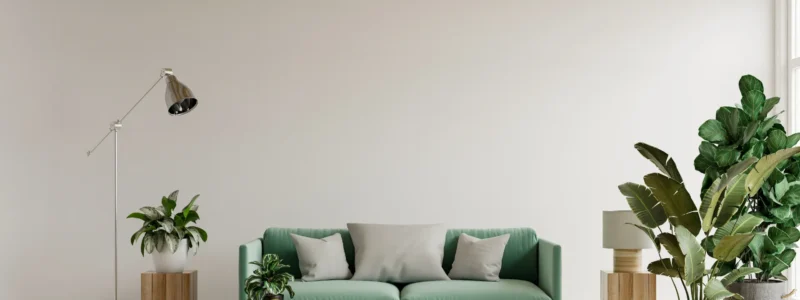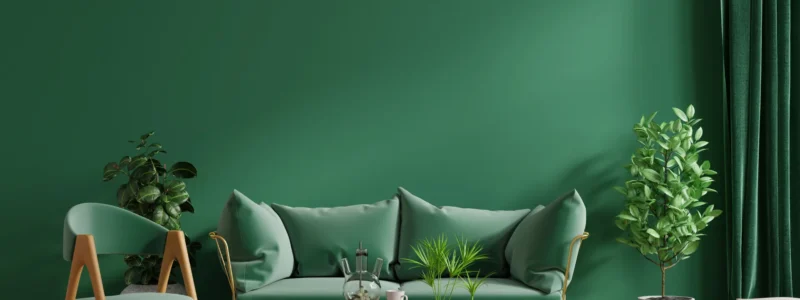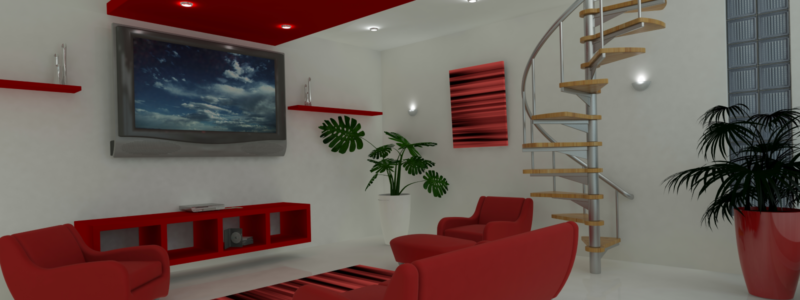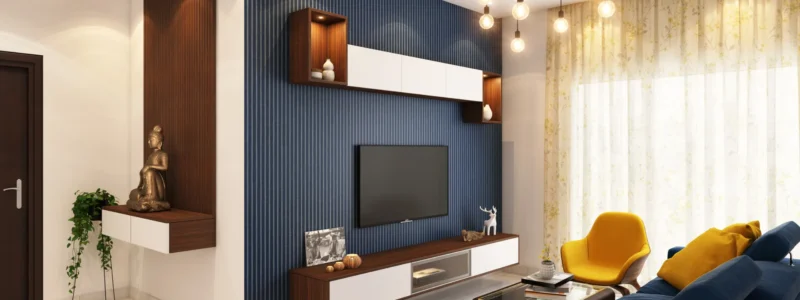How Can Biophilic Interior Design Bring Nature into Your Home?
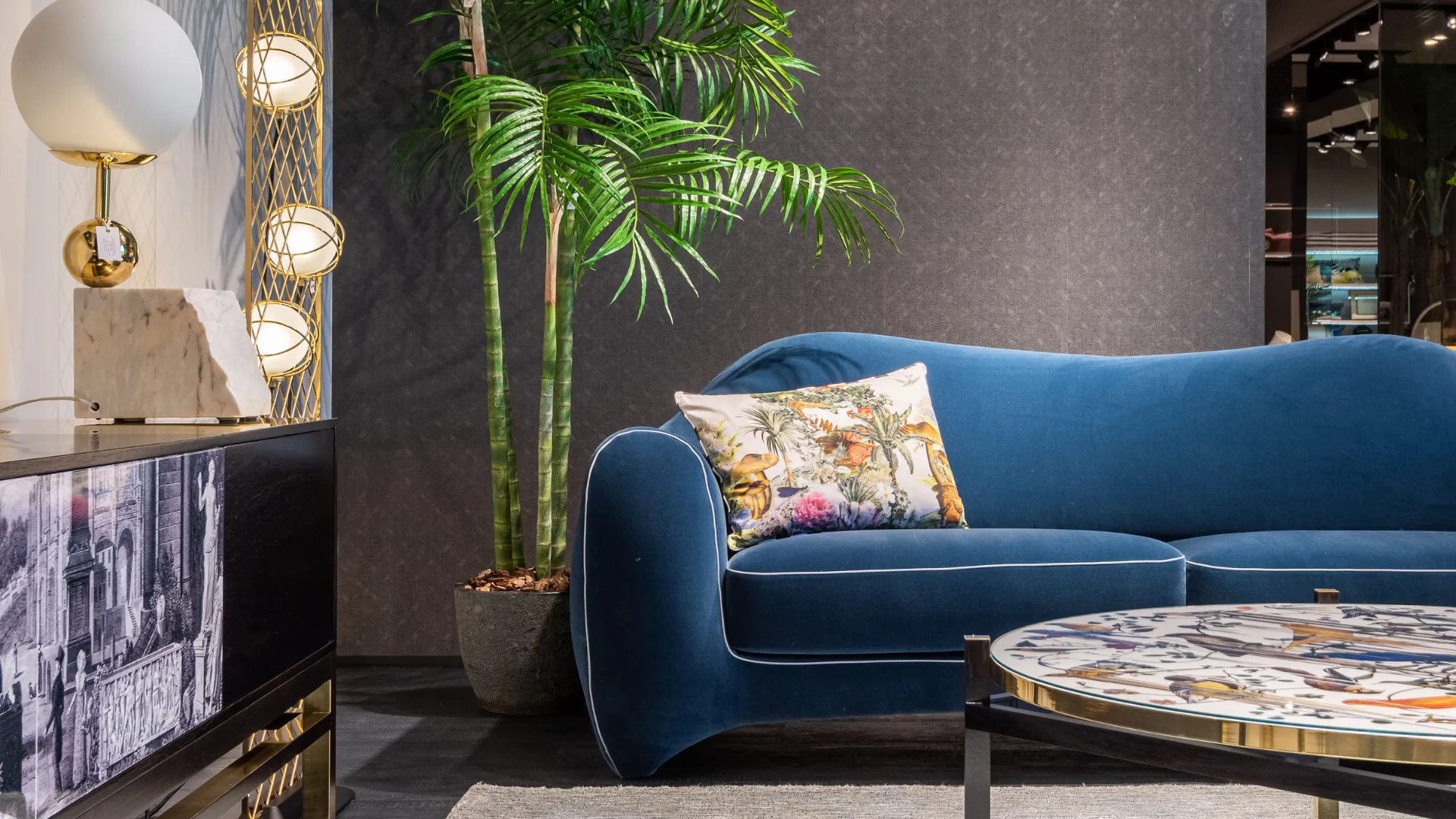
Colors are more than just visual elements in home interiors; they influence emotions, energy levels, and the overall atmosphere of a space. Choosing the right palette can transform a room from dull to dynamic or from chaotic to calming.
Warm colors like red, orange, and yellow are known to bring vibrancy and warmth into a home. Red energizes and stimulates conversation, making it perfect for dining areas or living rooms. Orange inspires creativity and enthusiasm, while yellow creates a sense of happiness and optimism, ideal for kitchens or breakfast nooks.
On the other hand, cool colors such as blue, green, and purple evoke calmness and relaxation. Blue, often associated with tranquility, is a great choice for bedrooms or bathrooms. Green brings balance and a connection to nature, making it versatile for almost any space. Purple, especially in softer tones like lavender, can create a soothing and luxurious vibe.
Neutral colors—white, beige, and gray—act as balancing tones that provide flexibility and sophistication. They make a great backdrop for accent colors and allow you to switch moods easily by adding colorful décor pieces.
It’s also important to consider personal preference and room function. A workspace might benefit from stimulating tones like yellow, while a meditation corner may call for calming greens or soft blues.
At D2M interior, the focus is on blending psychology with design. By carefully selecting colors that align with your lifestyle, every room in your home can be both beautiful and emotionally supportive.
1. What Is Biophilic Interior Design?
Biophilic interior design is a modern design approach that focuses on reconnecting people with nature within built environments. The term biophilia means “love of life” or “love of living things,” and in interiors, it translates to creating spaces that enhance well-being by incorporating natural elements, patterns, and materials.
At its core, biophilic design is more than just adding a few plants to a room. It’s about blending nature seamlessly into the overall design concept. This can be achieved through direct elements like indoor greenery, water features, and natural light, or indirect elements such as organic shapes, earthy color palettes, and natural materials like wood, stone, or bamboo.
For example, a living room with large windows that invite ample sunlight, indoor plants that purify the air, and furniture crafted from sustainable wood reflects the essence of biophilic design. Similarly, textured stone walls or wallpapers with botanical prints create a natural ambiance even in urban apartments.
The benefits go beyond aesthetics. Research shows that spaces designed with biophilic principles can reduce stress, boost productivity, and improve mood. In workplaces, it fosters creativity and focus, while in homes, it promotes relaxation and a sense of harmony.
Biophilic interior design also aligns with sustainable living. By choosing eco-friendly materials, maximizing natural ventilation, and reducing reliance on artificial lighting, it supports a healthier planet while enhancing comfort.
In short, biophilic interior design is about creating a sanctuary that feels alive, refreshing, and deeply connected to the natural world. Whether it’s a cozy corner with potted plants or a full home designed with natural patterns, it transforms spaces into healthier, happier environments.
2. The Science Behind Biophilia
Biophilia is the innate human connection to nature, influencing both our physical and mental well-being. Studies reveal that incorporating natural elements like sunlight, greenery, water features, and organic textures can reduce stress, boost creativity, and enhance overall happiness. In interior design, biophilic principles are applied through indoor plants, natural materials, and open spaces that mimic outdoor environments. This design approach not only beautifies a home but also promotes health and productivity. At D2M interior, biophilia is seamlessly integrated into spaces, ensuring harmony between humans and nature while creating interiors that inspire comfort, peace, and vitality.

3. Key Elements of Biophilic Interior Design
To create a home that feels alive and soothing, biophilic design incorporates certain key principles. Many Interior Designers in Chennai for Flats are now adopting these elements to help homeowners reconnect with nature even within compact urban apartments.
a. Natural Light
Maximizing sunlight is essential in biophilic interiors. Large windows, skylights, and glass doors help bring in daylight, regulating circadian rhythms and boosting mood.
b. Indoor Plants
Plants are central to biophilic design. From potted greenery to vertical gardens, plants improve air quality, reduce stress, and add visual vibrancy. Low-maintenance options like snake plants, pothos, and succulents are ideal for beginners.
c. Natural Materials
Wood, stone, bamboo, jute, and clay are often used to introduce natural textures. These materials not only look beautiful but also add warmth and authenticity to interiors.
d. Organic Patterns and Forms
Nature-inspired patterns, such as flowing curves, leaf motifs, or water-like textures, can be incorporated through wallpapers, textiles, or furniture. Unlike rigid geometric lines, these organic shapes create softness and comfort.
e. Water Features
The soothing sound of flowing water reduces stress and enhances tranquility. Indoor fountains, aquariums, or wall-mounted water features are effective ways to bring water into interiors.
f. Natural Colors
Earth tones, greens, blues, and sandy neutrals mimic the colors of nature, creating calming and refreshing spaces.
Also checkout, “The Ultimate Checklist for Your Home Renovation”
4. Biophilic Design in Different Rooms
Living Room
Introduce large plants, wooden furniture, and natural textiles. A vertical garden wall or oversized windows overlooking greenery can serve as focal points.
Bedroom
Use breathable, natural fabrics for bedding, wooden bed frames, and calming earth-tone palettes. Adding small potted plants or a view of nature outside the window enhances relaxation and better sleep.
Kitchen
Herb gardens, stone countertops, and wooden cabinets bring life to the kitchen. Natural ventilation and plenty of sunlight also support health and comfort.
Bathroom
Bathrooms are excellent spaces for biophilic design. Plants that thrive in humidity, pebble flooring, and bamboo accessories transform the space into a spa-like retreat.
5. Benefits of Biophilic Interior Design
- Improved Well-being: Reduces stress, boosts mood, and enhances emotional resilience.
- Better Air Quality: Indoor plants absorb toxins and release oxygen.
- Enhanced Productivity: Natural light and greenery improve focus and creativity, making it ideal for home offices.
- Connection to Nature: Essential for urban homes where access to outdoor greenery is limited.
- Aesthetic Appeal: Adds vibrancy, warmth, and organic beauty to interiors.

6. Tips for Bringing Biophilic Design into Your Home
While the principles of biophilic design are easy to understand, their execution can vary depending on your home’s size, location, and layout. This is where professional expertise becomes valuable. The Best Interior Designer in Chennai can help tailor these elements to your lifestyle, ensuring your home reflects both modern design and a deep connection with nature.
Here are some tips to get started:
- Maximize natural light with sheer curtains and large windows.
- Incorporate plants in every room, from small succulents to large indoor trees.
- Choose natural materials for flooring, furniture, and decor.
- Use wallpapers or art that depict natural landscapes.
- Add water features for sound and visual tranquility.
- Embrace outdoor-indoor transitions with balconies, patios, or sliding doors.
Final Thoughts
Biophilic interior design isn’t just a passing trend—it’s a lifestyle that nurtures health, happiness, and sustainability. By bringing nature indoors, you can create spaces that not only look beautiful but also feel restorative and alive. In a world where people are increasingly disconnected from nature, biophilic interiors serve as a bridge, reconnecting us with the natural rhythms that ground and inspire us.
